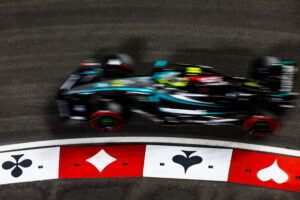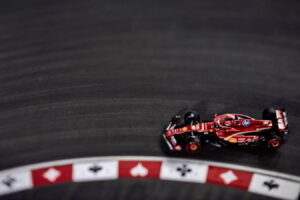The 16th race of the 2017 Formula 1 season will take place at the historic Suzuka circuit in Japan this weekend. The Japanese Grand Prix (Nihon-guranpuri) is one of the most anticipated races in the F1 calendar. This is the 33rd running of the Japanese GP, with all but four races hosted at Suzuka (the races in 1976, 1977, 2007 and 2008 were held at Fuji).
Japanese Grand Prix Preview
The History
The original Suzuka track built in the 1960s was a 5.8-kilometers long circuit owned by the Japanese automaker Honda. The first official Japanese GP was however, held at the Toyota-owned Fuji track in 1976. This was the first race held at an Asian venue, before China and the East Asian Tigers joined the F1 calendar. The first Japanese GP marked the rise of Japan as a top economic power after World War II. Iconic Japanese automakers like Honda, Toyota and Nissan had become world leaders in the automotive industry.
The inaugural race in 1976 was won by the American Mario Andretti for Lotus. The grand prix distinguishes itself with a classic track described by most drivers as the ‘most challenging track’ in F1. The passion, knowledge and unparalleled support of the Japanese fans creates the atmosphere that makes this a truly unique race.
After 1977, the Japanese GP was not held again until 1987, when it returned as the penultimate race of the season. That first race in 1987 at Suzuka was won by Gerhard Berger for Ferrari. An unfortunate accident in the rain in 2014 led to the death of the very popular Manor F1 driver Jules Bianchi. That is still a painful memory for all F1 fans.
The Teams and Drivers
The McLaren team sits atop the leader board with nine wins at the Japanese GP (with one win at Fuji in 1977). Arch-rivals Ferrari has seven wins at Suzuka. Seven of the last eight races have been won by Red Bull Racing (four wins) and Mercedes (three consecutive wins from 2014).
Michael Schumacher has the most wins at the Japanese GP with six victories, all but one in Ferrari colors (1995 win was for Benetton). Sebastian Vettel is the next most successful driver with four victories at Suzuka (2009, 2010, 2012, 2013). Lewis Hamilton has chalked up three wins at the Japanese GP (2007, 2014, 2015). Among the other current drivers, Fernando Alonso (2006, 2008) and Kimi Raikkonen (2005) have won the Japanese GP.
The Japanese GP was one of the last races on the F1 calendar in its early years and became a venue for many historic races. The drivers’ title has been clinched at the Japanese GP 12 times, more than any other race on the F1 calendar. At the first race of the Japanese GP in 1976, a titanic battle all season-long between Niki Lauda and James Hunt culminated here with Hunt finishing third and clinching the drivers’ championship by one point. This rain-soaked dramatic race and the whole season has been immortalized in the Hollywood movie “Rush”.
In 1988, Ayrton Senna driving for the McLaren-Honda team won the Japanese GP at Suzuka. This led to his first drivers’ championship and the start of his dramatic rivalry with teammate Alain Prost. The next two seasons saw tough battles for the title between the two teammates culminate at the Suzuka track with race-ending collisions and disqualification. The World Championship was won by Prost in 1989 and by Senna in 1990. The intense and bitter rivalry between the two drivers with the controversial races in Suzuka will forever be etched in the memories of F1 fans.
The Circuit
The 5.807 km Suzuka circuit with 18 corners (10 right-hand and 8 left-hand corners) with the high-speed ‘figure 8’ is the one of the fastest tracks on the F1 calendar with an average speed of over 235 km/h. The track is very challenging with high-speed corners, sweeping curves and straights punctuated by slow speed corners. Suzuka demands a high downforce setup. The cars are on full throttle 70% of the time and the fuel consumption is high. The brake-wear is low, with heavy loads placed on the engines.
Sectors, Corners and DRS Zones
Sector 1 (Turn 1 to Turn 7) is a high-speed sector starting with a sweeping right-hand corner (Turn 1) followed by another slower right-hand corner (Turn 2). This leads to the rapid “Esses” (Turn 3 to Turn 6) demanding quick directional changes. The drivers need to get these curves absolutely correct with quick gear changes and high loads are placed on the engine. The long sweeping left-hand Dunlop curve (Turn 7) ends the quick first sector.
Sector 2 (Turn 8 to Turn 14) starts with the right-hand Degner Curves (Turn 8 and 9) leading to a short straight under the bridge. This is followed by a sharp hairpin (Turn 11), followed by a sweeping right-hand curve (Turn 12), leading to the Spoon curve (Turns 13 and 14). This leads to a long straight to end this second sector.
Sector 3 (Turn 15 to Turn 18) starts with the iconic 130R (Turn 15). This is a flat out high-speed left hand corner which has been altered due to safety concerns after major crashes in the early 2000s. This leads to the slow right-left chicane at the Casio triangle (Turns 16 and 17). The final right-hand corner (Turn 18) leads to the start-finish straight.
There is only one DRS zone this year at this circuit with many overtaking opportunities. The first DRS detection point comes before Turn 16, with the first DRS activation point after Turn 18.
Tyre Strategies
Pirelli tyre choices are the white-striped medium tyres, yellow-striped soft tyres and red-striped supersoft tyres. The supersoft tyre is the tyre of choice of the drivers. The McLaren drivers lead the way with ten sets of the supersoft tyres of the allocated 13 sets for each driver. A two stop race is predicted. The rain is never far away at this venue. Overcast skies and a chance of rain could cause mixed weather conditions during the race.
Current Form
Mercedes (503 pts) has further extended its lead to 118 points over Ferrari (385 pts) now. Red Bull Racing (270 pts) is in a distant third place. Force India (135 pts) is in control of fourth place, followed by Williams (65 pts). Sauber bring up the rear of the field with five points.
Mercedes was seriously off the pace for a second race in a row with their car struggling in the heat and humidity of Malaysia. Red Bull has shown a dramatic improvement in form in the last three races and has got in the middle of the battle of the two front runners. Ferrari with the fastest car in the last two races has shot itself in the foot with errors and is on the backfoot with only five races left.
Lewis Hamilton (281 pts) has extended his lead to 34 points in the drivers’ title race. Sebastian Vettel (247 pts) has a lot of ground to make up now. Valtteri Bottas (222 pts) is in third place and has fallen further back from the title contenders. Daniel Ricciardo (177 pts) and Kimi Raikkonen (138 pts) complete the top five in the Drivers’ Championship.
Hamilton has had the rub of the green and has driven intelligently to capitalize on the errors and reliability issues of his main rival in the last two races. Vettel goes into the final five races with the confidence that he has a fast car, but still has lots of work to do to catch up.
Max Verstappen put behind his season-long frustrations with an impressive win in the last race. The Red Bull drivers could play a significant role in the title race as the team seems to have caught up with the two leading teams. The Suzuka track is one of the classic old F1 tracks and it always throws up a good race. With the drivers’ title race on a knife’s edge, a great race is in prospect.
Main Photo
Embed from Getty Images






